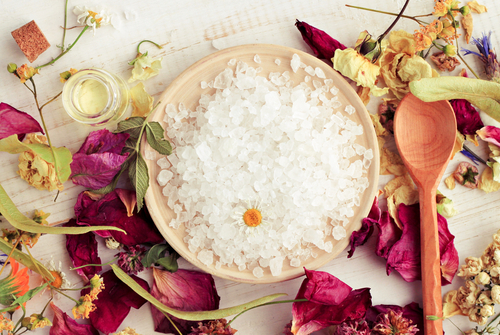What are cosmetic preservatives?
Cosmetic preservatives are ingredients added to formulas to prevent the growth of microbes. Since microbes can cause problems like spoiling formulas and spreading disease, preservatives are required to stop them. Common standard preservatives include Methylparaben, DMDM Hydantoin, and Methylisothiazolinone. While these ingredients are effective many consumers and natural cosmetic brands object to their use believing they represent a significant health hazard. For this reason formulators often need natural preservatives to control microbial growth.
How do preservatives work?
The exact mechanism by which preservatives control microbial growth is not known in detail, but most are thought to work by disrupting the cell membrane of microbes. Preservatives cause gaps in the cell membrane, which destabilizes it and ultimately causes the cell to die. Some preservatives are more effective bacteria while others are more effective against molds and yeasts.
What are natural preservatives?
Materials that are considered natural preservatives vary depending on what you or your company consider natural. Some companies believe that natural preservatives must come only from plant sources. Other companies consider materials natural preservatives as long as the ingredient can be found in nature. Still other definitions of natural allow for ingredients derived from natural starting materials. Finally, some would consider any preservative natural as long as it is not a paraben, formaldehyde donor, or synthetic biocide. Common natural preservatives include Phenoxyethanol, Phenethyl alcohol, Benzyl Alcohol, and Organic Acids and their Salts such as Benzoic Acid & Sodium Benzoate. Since natural preservatives are not as effective as standard ones, formulators often include ingredients which are not preservatives themselves but can boost performance. These include materials like Caprylyl Glycol, Caprylic Acid, Gluconolactone, and Ethylhexyglycerin.
How can hurdle technology be used for natural preservation?
In addition to using preservative boosters natural formulators need to take extra measures to ensure their products remain preserved and safe. The idea behind hurdle technology comes from the food industry. This strategy involves finding different materials and factors that can inhibit microbial growth on their own but usually at high levels or exaggerated conditions. By combining these factors you can get the benefits with reduced levels. The idea is that you make it more and more difficult for microbes to grow and thus have a preserved product. Some of the factors involved in hurdle technology include low pH, high heat during production, lower water activity, chelating agents, use of antioxidants, anhydrous formulas, and special packaging.
Perry Romanowski is the Vice President of Element 44 Inc. He is also a cosmetic chemist researching and developing products that solve consumer problems in the personal care and cosmetic industry. Visit www.chemistscorner.com
Register your interest here to attend in-cosmetics North America, October 11-12 at the Javits Center, New York.


Is there any side effect of the use of phenethyl alcohol,phenoxyethanol,capryl glucone,ethylhexyglycerine? Will be very grateful for answers provided.